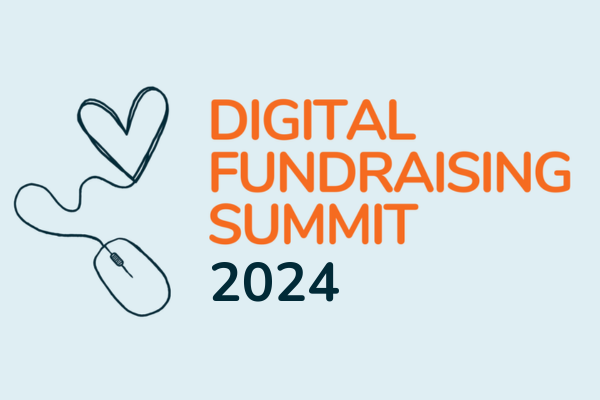Insights
INSIGHTS
All Topics
My Account
How is the charity sector faring so far in 2024?
29 Aug 2024by Laura Stanley
We examine findings from the 2024 Summer Pulse report from fundraising, donations, and events platform Enthuse
There is good news in the charity sector: the economy is starting to stabilise. The UK rate of inflation has steadied, meaning that although the cost-of-living continues to rise, it is no longer quite the steep ascent experienced in 2022. Charities still face the challenge of meeting increased demand with limited funds, but in a more stable economy, they can make more detailed plans to meet it.
Indeed, research has shown that improvements in the economic situation have fed through to fundraising. The Summer 2024 Donor Pulse report, from fundraising, donations, and events platform Enthuse, found that three quarters of the public have given to charity in the last three months, the second highest number in 16 editions of the Pulse report.
The report notes that the TCS London Marathon may have had an impact on the high level of giving, having raised a record amount of money for charities in 2024. But there is reason to suggest giving levels will remain high in the next quarter too, with 78% of people saying they intend to donate to charity in the three months ahead.
This is good news for charities relying on a reliable source of income to fund their services. With appetite for giving remaining high, charities are able to forecast their financial situation more accurately and direct their resources to where they are most needed.
To that end, we explore more findings from the 2024 Summer Donor Pulse report below and understand what they mean for the future of fundraising.
Online giving still growing
Three in five donations made in the last three months were made online, Enthuse’s report reveals, a three percentage point increase on the previous quarter. Nearly half (46%) of the public are giving to charity this way, driven predominantly by younger age groups. More than half of under-45s are donating online (57%) compared to little over a third of those aged over 45 (36%). Enthuse notes that this gap in donor behaviour across age groups has increased, but that all age groups had increased their online giving in the last three months.
Most people donated online directly through a charity’s website, accounting for 44% of online donations, compared to 30% who gave through a consumer giving platform and 19% who donated via a crowdfunder. Enthuse founds that donations made directly through a charity’s webiste were 28% higher than those made through consumer giving platforms
Cautious economic optimism
With a more positive economic outlook, there is reason for optimism in the charity sector. The Summer Donor Pulse report found that the gap between those feeling better off and worse off has decreased over the last three months to less than half of what it was a year ago. One in five respondents (19%) say they feel better off while the number of people feeling worse off (44%) is the lowest since 2022. Overall, more than half of people (56%) feeling either the same or better off than they were.
When asked if their financial position made it easier or harder to donate, 44% of respondents said it was the same or better than it was six months ago. Around a third (35%) said it was about the same – however, a similar proportion (32%) said it was a bit harder. Yet, as Enthuse notes, three quarters of respondents were still able to give to charity in the last three months. There was also a decrease in the amount of people feeling worse off economically who said they had stopped giving to charity altogether, with more preferring to give smaller or fewer donations instead.
“While the overall number of people feeling worse off has stayed the same, there is a hint at improving circumstances with a small shift from people feeling it’s much harder to donate to feeling it’s just a little harder to give,” says Enthuse. “For charities, providing a range of donation options to make it as easy as possible to donate remains an important element of campaigns.”
Trust in charities is high
The report found that trust in the charity sector is high, with 73% of people having either moderate or high trust in good causes. The number of people who have high trust in charities was more than that of the next three trusted groups put together. Two in five respondents had high trust in charities, while 15% said the same about religious institutions. Only 11% said they had high trust in the UK Government and 9% in corporations.
One of the core concerns for donors is fake news and misinformation. Two thirds (66%) of respondents said they were concerned about fake news, with nearly a quarter (23%) saying they are very worried about it, and just 4% stating they are not worried at all.
This level of distrust is notable for charities in how it impacts their ability to convey information. Almost half of respondents (48%) say they mistrust what they see, hear, or read about charities in traditional media, while 62% say the same about social media.
However, 73% of people say they have moderate or high trust in what they hear directly from charities and their websites. This presents an important opportunity for charities. As Enthuse points out, donations are higher when given directly through a charity’s website, while information conveyed there is more trusted. Enthuse recommends that charities focus on using their channels to drive people back to their own sites, “whether that is through a social channel, or a celebrity ambassador or patron”. While different channels are beneficial for different audiences, it’s the charity voice itself that remains most trusted.
More on this topic
Recommended Products
Recommended Products
07 Mar 2025by Ioan Marc Jones
A-Z incredible fundraising ideas for charity
07 Mar 2025by Ioan Marc Jones
An A-Z glossary of service delivery terms and definitions
Our Events
Charity Digital Academy
Our courses aim, in just three hours, to enhance soft skills and hard skills, boost your knowledge of finance and artificial intelligence, and supercharge your digital capabilities. Check out some of the incredible options by clicking here.






















